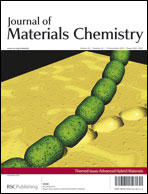An innovative thermal analysis methodology is applied for the characterization of poly(ε-caprolactone) (PCL) nanocomposites containing layered silicates, needle-like sepiolite or polyhedral oligomeric silsesquioxane (POSS) nano-cages, aiming at assessing the key factors affecting nanofiller dispersion and nanocomposite properties. This methodology takes benefit of the fact that—for a given nanofiller aspect ratio—the magnitude of the excess heat capacity recorded during quasi-isothermal crystallization is directly related to the occurrence of pronounced changes to the PCL crystalline morphology. The extent of these changes, in turn, directly depends on the amount of matrix/filler interface and can therefore be considered a reliable measure for the degree of nanofiller dispersion, as supported by complementary morphological characterization. The importance of processing parameters is demonstrated in a comparative study using various melt processing conditions, evidencing the need for high shear to effectively exfoliate and disperse individual nanoparticles throughout the polymer matrix. Furthermore, the choice of the nanocomposite elaboration method is shown to profoundly affect the final morphology, as illustrated in a comparison between nanocomposites prepared by melt mixing, by in situ polymerization and by a masterbatch approach. Grafting PCL onto the filler strongly enhances its dispersion quality as compared to conventional melt mixing; subsequently further dispersing such grafted nanohybrids into the polymer matrix through a masterbatch approach provides a highly efficient method for the elaboration of well-dispersed nanocomposites. Finally, the crucial issue of interfacial compatibility is addressed in a comparison between various surface-treated layered silicates, showing that high degrees of filler dispersion in a PCL matrix can only be achieved upon polar modification of the silicate.

You have access to this article
 Please wait while we load your content...
Something went wrong. Try again?
Please wait while we load your content...
Something went wrong. Try again?


 Please wait while we load your content...
Please wait while we load your content...